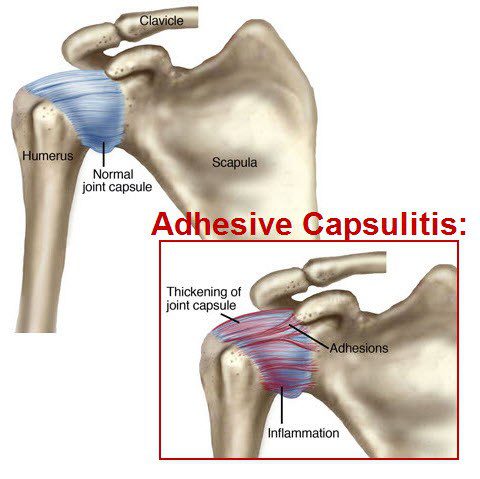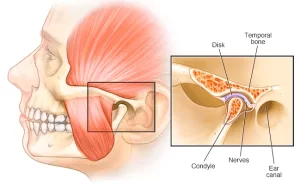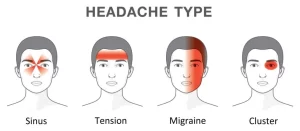Frozen Shoulder or Adhesive Capsulitis is a common disorder that causes pain, stiffness, and loss of normal range of motion in the shoulder. There are 3 stages to Frozen Shoulder.
Stage 1 Freezing: In the “freezing” stage, you slowly have more and more pain. As the pain worsens, your shoulder loses range of motion. Freezing typically lasts from 6 weeks to 9 months.
Stage 2 Frozen: Painful symptoms may actually improve during this stage, but the stiffness remains. During the 4 to 6 months of the “frozen” stage, daily activities may be very difficult.
Stage 3 Thawing: Shoulder motion slowly improves during the “thawing” stage. Complete return to normal or close to normal strength and motion typically takes from 6 months to 2 years.
Physical therapy can help with Frozen Shoulder pain. The overall goal of physical therapy is to restore movement. Once the evaluation process has identified the stage of the condition, a physical therapist will create an individualized exercise program tailored to specific needs. Exercise has been found to be most effective for those who are in stage 2 or higher.
In stages 1 and 2, exercises and manual therapy techniques will help maintain as much range of motion as possible and reduce pain. Modalities such as heat and ice treatments will also be to help relax the muscles prior to other forms of treatment. A gentle home-exercise program will be designed to help reduce the loss of motion when there is progress and safe healing.
The focus of treatment during stage 3 is on the return of motion. Treatment may include the introduction of more intense stretching techniques to encourage greater movement and flexibility, manual therapy to a higher level to encourage the muscles and tissues to loosen up, and strengthening exercises targeting the shoulder area as well as core muscles.
In the final stage, the therapist will focus on the return of normal shoulder body mechanics and functional training. The focus of treatment includes manual therapy, stretching, and range of motion exercises for the shoulder. Exercise has been found to be most effective for those who are in stage 2 or higher. Sometimes heat therapy is used to help loosen the shoulder up before treatment. As treatment progresses, functional training will be incorporated and a home-exercise program will be designed to help reduce loss of motion as well as promote safe healing. If in doubt, seek professional advice.
Check out our popular articles: Diastasis Recti, Tight Back Muscles, Irritable Bowel Syndrome (IBS), Temporomandibular Joint (TMJ) Dysfunction, Tennis Elbow, Wrist Tendon Injury, Sciatica, Whiplash, Hernia, Herniated Disc (Slipped Disc).




